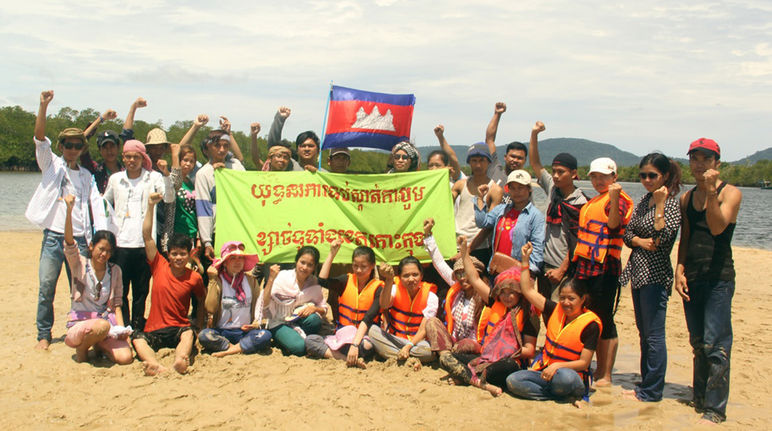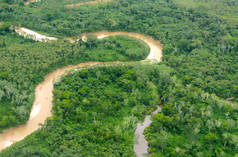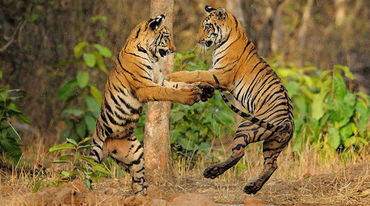Singapore is dredging our home away: hands off our sand!
 Mother Nature activists with a banner reading “Stop dredging in Koh Kong province” (© Mother Nature)
Mother Nature activists with a banner reading “Stop dredging in Koh Kong province” (© Mother Nature)
Sand is a valuable, increasingly scarce resource. Singapore, the world’s largest sand importer, is fueling its building and land reclamation boom by dredging away neighboring countries’ beaches, riverbeds and whole islands. Cambodian fishermen and their families are protesting the destruction and three activists have now been jailed.
Call to actionTo: Prime Minister of Cambodia Hun Sen; Prime Minister of Singapore Lee Hsien Loong
“River sand from Cambodia’s Koh Kong province is being shipped to Singapore despite an export ban. Stop the devastating dredging and trafficking in sand.”
“They destroyed our river. The water is so dirty now, and there is less fish.” Vey Van Ning is filled with righteous anger as he boards his boat on July 27. Together with other fishermen, their families and activists of the Cambodian NGO Mother Nature, he heads out to the dredgers and transport barges that are digging up the sand of the Andoung Teuk estuary. The barges belong to Rainbow International and Direct Access – companies based in Vietnam – but the sand is destined for Singapore.
“These companies have been wrecking and polluting the estuaries and coastal areas of Koh Kong since 2009,” explains Mother Nature co-founder Sun Mala. “What they are doing here is illegal.” Sun Mala and two of his colleagues were arrested on August 17 for their repeated protests against against illegal dredging.
Cambodia’s sand is literally the foundation of Singapore’s economic growth. The country was the booming city-state’s main supplier until 2009. According to the British NGO Global Witness, 796,000 tons of sand made their way from Cambodia’s southwestern coast to Singapore – every month.
Following protests by locals against the destruction of their environment, Cambodian Prime Minister Hun Sen imposed an export ban on sand from rivers and coastal areas in 2009. Neither the involved companies nor the Cambodian authorities seem to be particularly concerned by the ban, however. On July 30, opposition politician Son Chhay wrote Hun Sen: “Please, take more action to stop the lawless dredging, which provides little income for the state but has serious effects on the environment and residents’ livelihoods.”
Tell the governments of Cambodia and Singapore to stop the destructive dredging of rivers and coastal areas and put an end to international trafficking of this valuable resource.
BackgroundSand – rarer than one thinks
That is the title of a study by the United Nations Environment Programme (UNEP) that highlights the dramatic shrinkage of the Earth’s sand reserves.
According to experts, sand and gravel are being extracted at an unprecedented rate. Yet sand is not an inexhaustible resource.
More than 40 billion tons of sand are consumed worldwide every year according to UNEP’s conservative estimate. That is twice the annual amount of sediment borne by all the rivers in the world. Despite this alarming situation and the devastating effects of dredging on the environment and coastal dwellers, most policymakers are ignoring the issue.
Where is the sand used?
Sand is the second most sought-after raw material in the world after water. It is used in the production of glass, electronics, paper and cosmetics. The construction industry uses the lion’s share, however, as sand makes up about two thirds of reinforced concrete. According to UNEP, global concrete production consumed an estimated 25.9 to 29.6 billion tons of sand in 2012. That would be enough concrete to build a wall 27 meters high by 27 meters wide around the equator. 30,000 tons of sand go into one kilometer of an average highway. Sand is increasingly in demand for land reclamation and shoreline development, especially in fast-growing countries like China, Brazil, India and wealthy states like Dubai and Singapore. Desert sand, incidentally, is not suitable for construction and land reclamation due to the poor adhesion of its smooth, round grains. By contrast, sand from oceans and rivers is rough and jagged.
The global sand trade is estimated at $70 billion dollars per year – trafficking not included – according to the architect and geographer Joshua Comaroff in Harvard Design Magazine.
Where does the sand in rivers and oceans originate?
90 percent of the total volume is eroded from mountains and transported to the ocean via streams and rivers, a process that takes thousands of years.
Only around half of the Earth’s sand currently reaches the ocean: it is either dredged or trapped in reservoirs. The world’s 850,000 dams not only hold back water, they also retain sediment.
The consequences of dredging for sand
In rivers: Dredging near the shore destroys the habitat of numerous plant and animal species. It changes the course of rivers and increases the likelihood of flooding or falling ground water tables during droughts. Excavators and barges pollute the water, damage riverbanks and affect the stability of bridges.
In oceans: As river sand becomes increasingly rare, dredgers are becoming more common in coastal areas. To minimize costs, they operate in shallow water as close to beaches as possible. The destruction is colossal: “Dredge boats suck up flora and fauna and destroy entire marine ecosystems,” notes Singapore-based marine biologist Chou Loke Ming. Food chains collapse, with a far-reaching impact on marine life.
Coastal erosion: The holes in the seabed left by the giant dredgers unsettle nearby coastal sand, which then shifts into the depressions. This has caused the disappearance of entire Indonesian islands near the border to Singapore – 25 to date.
Singapore’s hunger for sand
The city-state is among the 20 smallest countries in the world and is the richest country in Southeast Asia. Since its independence in the 1960s, its population has more than tripled – from 1.63 to 5.5 million (2014). No wonder Singapore needs more space: its original territory of 582.5 km2 has expanded to 712.4 km2 due to land reclamation and a further 70 km2 are due to be added by 2020.
Singapore is the world leader in importing sand: 517 million tons over the last 20 years, and currently nearly 30 million tons – or 5.4 tons per inhabitant – a year!
The economic giant has long since run out of sand of its own for skyscrapers and land reclamation: “We have been taking sand from our hills and then, when there are no more hills left, we have been dredging sand from seabeds, and now most of it is being imported from neighboring countries,” explains Professor Chou Loke Ming from the Biological Science Center of the National Institute of Singapore.
Singapore’s sand sources: its neighboring countries
More than two decades ago, Singapore began to satisfy its hunger for sand by “absorbing” it from its neighbors. Its first source was Malaysia, which banned the export of sand to Singapore in 1997. Indonesia followed suit in 2007 after a number of remote islands in the Riau Archipelago of northeastern Sumatra vanished – only to re-emerge as Singapore’s new coastline. Cambodia banned the export of sand in 2009.
Since then, Myanmar and the Philippines have become the main suppliers of Singapore’s sand, according to architect Joshua Comaroff.
Myanmar’s respected news outlet Eleven reports that the country has exported more than four million cubic meters of sand to Singapore since 2011. The people of the affected Tanintharyi region have been suffering landslides and erosion as a result. Myanmar’s prime minister nevertheless announced that his country would continue delivering sand, cement, granite and other building material to Singapore over the long term.
Sand trafficking is booming
Export bans in a number of countries have opened the floodgates for illegal dredging and trafficking, fueling corruption in countries like Cambodia and Indonesia. In 2010, the NGO Global Witness published “Shifting Sand”, a report implicating companies owned by members of the Cambodian government in illegal dredging operations. Licenses were allegedly issued despite official export bans. Singapore is the purchaser of this illegally dredged and smuggled sand.
Dredging in the rivers and estuaries of Koh Kong province has had a severe impact on the environment, destroying mangrove forests and causing the collapse of fish stocks, thus depriving thousands of families of their livelihoods. Both Cambodia and Singapore vehemently deny the report’s accusations.
Rainforest Rescue’s Cambodian partner organization Mother Nature frequently reports on illegal dredging and protests by conservationists and the people of Koh Kong province:
https://www.cambodiadaily.com/news/fishermen-claim-victory-against-sand-dredgers-81942/
http://www.phnompenhpost.com/national/locals-turn-against-activists
There is also mounting evidence of ongoing sand smuggling to Singapore from Indonesia: on February 10, 2015, the newspaper Medan Bisnis Daily published a photo of a barge loaded with sand destined for Singapore.
In 2012, Indonesian customs confiscated two ships with a total of 5,000 cubic meters of sand for Singapore.
Singapore’s hypocrisy
Singapore denies all allegations of involvement in corruption and sand trafficking. In its response to the 2010 Global Witness report, the government wrote that private companies import the sand – not the government. Those companies would ensure that their contractual partners in the source countries act in an appropriate manner. Furthermore, Singapore does not consider itself responsible for monitoring compliance with the laws of other countries.
At the same time, the city-state presents itself as a leader in environmental protection in Southeast Asia. On its website, Singapore’s Building and Construction Authority states that it is “dedicated to contributing to the well-being of the community and the environment”.
George Boden of Global Witness describes Singapore’s failure to mitigate the social and ecological cost of sand dredging as “hypocrisy on a grand scale”.
To: Prime Minister of Cambodia Hun Sen; Prime Minister of Singapore Lee Hsien Loong
Excellencies,
Vast quantities of sand are being dredged in the river estuaries of Koh Kong province for export to Singapore. As reported in the IUCN’s “Study of Coastal Mangrove Forest Devastation and Channel Sedimentation”, the resulting destruction of mangroves and riparian vegetation have deprived local fishermen and their families of 80 percent of their catch.
The impact was already so severe in 2009 that you, Prime Minister Hun Sen, imposed a ban on the export of sand from rivers and coastal areas. The dredging activities are nevertheless continuing unabated.
In late July 2015, fishermen, their families and conservationists expelled dozens of dredging and transport vessels belonging to the Vietnamese companies Rainbow International and Direct Access from the Andoung Teuk river. These companies were not only violating the present export ban, they had also not submitted an environmental impact analysis for their activities. While the Cambodian Ministry of Mines and Energy asserts that they have a license, they are not only operating outside the designated area, but also dredging 8.5 meters deeper than permitted. Opposition politician Son Chhay has described the actions of the two companies as illegal.
Photos document that the Vietnamese barges transferred their cargo to the Ikan Jenahar, a ship chartered by Pacific Carriers, a Singapore-based shipping company. “The sand is destined for Singapore,” confirmed a Pacific Carriers representative.
According to the United Nations Environment Programme (UNEP) 2014 report, “Sand, rarer than one thinks”, Singapore has imported 517 million tons of sand over the past twenty years, making it by far the largest buyer in the world. Every year, Singapore buys a further 30 million tons.
The price for the growth of your country, Prime Minister Lee Hsien Loong, is being paid by the people living in the countries where the sand originates – whether through legal or dubious sources. The trade is being facilitated by a lack of monitoring, rampant corruption and illegally awarded licenses.
Sand is not an inexhaustible resource. We therefore call on you as the heads of your respective governments to put an end to the destructive dredging of sand in Cambodia and to imports to Singapore from other countries.
Kind regards,













 Recent successes
Recent successes